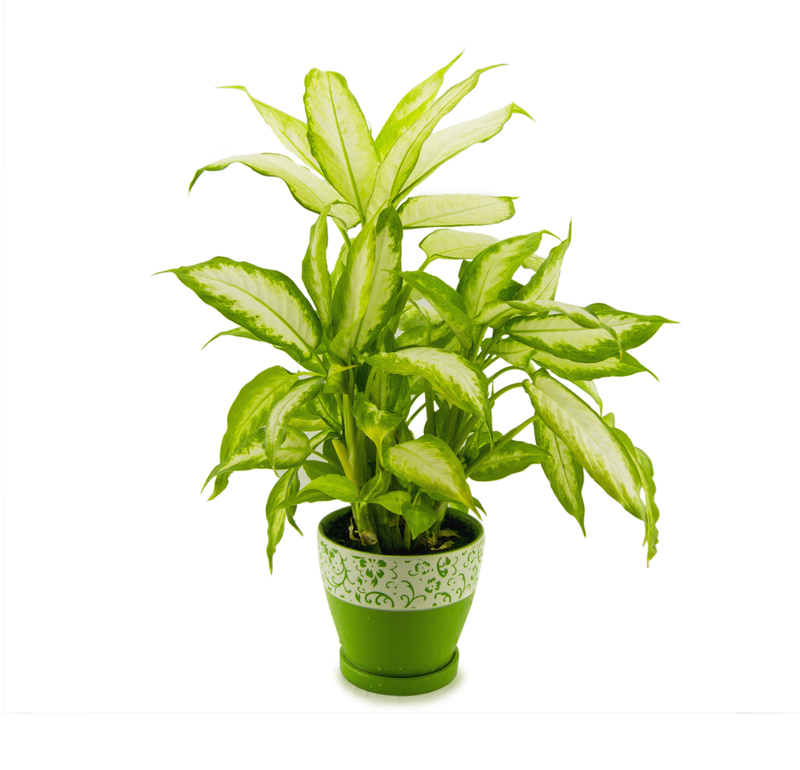Crafting a Green Space Brimming with Child-Friendly Features
Posted on 17/09/2025
Crafting a Green Space Brimming with Child-Friendly Features
In today's world of increasing urbanization and digital distractions, creating a welcoming and safe outdoor environment is more vital than ever--not just for beauty, but for our children's well-being, creativity, and learning. A well-designed, child-friendly garden or green space offers endless hours of play, exploration, and family bonding. This comprehensive guide will illuminate how to transform your outdoor area into a nurturing sanctuary, brimming with features and sensibilities that cater to children.

Why Prioritize a Child-Friendly Green Space?
Designing a garden or backyard with young ones in mind isn't just about play. A thoughtfully crafted green space with kid-friendly features nurtures physical health, fosters cognitive development, and encourages valuable life skills such as responsibility and environmental stewardship. Studies show that children who regularly interact with nature:
- Have improved concentration and academic performance
- Exhibit lower stress levels and better emotional balance
- Develop stronger immune systems
- Are more likely to enjoy physical activity
Growing a Passion for Nature
Introducing children to the wonders of nature early on can instill a lifelong appreciation for the environment. They learn not only about plants and wildlife but also about their vital role in the ecosystem. This makes crafting a green space with children in mind both fun and educational.
Main Principles for Creating a Green Space with Child-Friendly Features
Before digging, planting, or building, it's crucial to define your goals. Your unique space should reflect your child's age, interests, and abilities as well as your budget and maintenance preferences. Here are foundational principles to guide your project:
- Safety First: All areas should be secure, with non-toxic plants, smooth surfaces, and clear sightlines for supervision.
- Diversity of Activities: Include zones that cater to various activities--from active play to sensory exploration and quiet reflection.
- Inclusivity: Include elements suitable for varied ages and abilities to encourage all children to participate confidently.
- Nature Integration: Let natural features shine by using organic materials and native plants wherever possible.
- Adaptability: Incorporate flexible elements that grow with your children and can be repurposed or rearranged as interests evolve.
Key Child-Friendly Features to Incorporate
1. Safe, Soft Surfacing
Children slip, trip, and take tumbles when at play--so it's important to minimize harsh surfaces. Consider layering the ground with:
- Play-grade bark mulch or wood chips (splinter-free, natural cushion)
- Low-maintenance artificial turf (safe, clean and soft)
- Natural lawn (classic, refreshing ground cover)
- Rubber safety mats in high-traffic zones
Soft surfacing creates a forgiving playland and reduces injuries.
2. Interactive Play Structures
Every green space designed with children in mind should offer opportunities for active play and adventure. Depending on your garden's size and your DIY skills, you might include:
- Sturdy swing sets with various seat types
- A safe, age-appropriate climbing frame or jungle gym
- Treehouses or playhouses--can double as quiet reading or imagination zones
- Naturally integrated boulders for climbing and balancing
- Low, safe slides or tunnels built into grassy mounds
Ensure all structures are securely anchored and checked regularly for safety!
3. Sensory and Exploration Gardens
Sensory-rich gardens are at the heart of crafting a green space brimming with kid-friendly features.
- Scented pathways: Line paths with mint, lavender, or rosemary for an aromatic adventure.
- Touch zones: Incorporate grasses, soft mosses, and smooth stones.
- Sound corners: Hang wind chimes or install bamboo clackers for nature-inspired melodies.
- Edible beds: Grow cherry tomatoes, strawberries, or snap peas for a taste experience!
These features help children connect with nature, awaken their curiosity, and promote mindful observation.
4. Nurturing Wildlife Encounters
Transform your child-friendly garden into a living classroom, encouraging firsthand encounters with wildlife:
- Install birdhouses or feeders for feathered friends
- Add a shallow, child-safe pond with stepping stones (ensure close supervision!)
- Plant butterfly- and bee-attracting blooms such as milkweed, lavender, and sunflowers
- Provide a log pile or "bug hotel" to observe beetles, ladybugs, and worms
These features foster compassion, observation skills, and an understanding of biodiversity.
5. Flexible Open Spaces
Every play garden needs an open zone for free-form antics:
- Tag or soccer games
- Picnics or creative materials like building blocks
- Impromptu performances or group games
Unstructured, open space encourages children to invent new activities, promoting creativity and cooperation.
6. Creative Corners & Art Installations
Set up a corner for chalk drawing on outdoor blackboards or paving stones, provide water-based paints for mural walls, or use tree stumps, driftwood, and pebbles for temporary sculptures. You can also:
- String fairy lights for magical twilight ambiance
- Create painted rock trails or a mosaic stepping path
Encouraging self-expression outdoors makes your green space uniquely personal and memorable.
7. Growing Together--Gardening with Children
Planting, watering, and caring for a garden is a child-friendly feature that pays dividends in both fun and learning:
- Designate small raised beds for kids to sow and tend their own flowers or veggies
- Label plants with creative signs to teach plant names and care routines
- Let children take ownership of watering, harvesting, and observing changes
This instills patience, responsibility, and a sense of accomplishment.
Designing a Green Space for All Seasons
A well-designed child-friendly garden isn't only fun in summer. Make your space irresistible year-round with:
- Evergreen shrubs for winter hideouts
- Bulbs like crocusses and daffodils for early spring surprises
- Deciduous trees for crunchy autumn leaf piles
- Water features or mud kitchens for rainy days
Dress for the weather and encourage year-round exploration!
Safety Considerations: Making Play Worry-Free
- Choose non-toxic, non-allergenic plants--avoid toxic berries and sap.
- Fence and gate all access points to prevent wandering.
- Provide shade with awnings, pergolas, or leafy trees to protect against sunburn.
- Keep tools and fertilizers safely stowed out of reach.
- Check garden features regularly for splinters, loose bolts, or tripping hazards.
Enlist your children in safety inspections--empowering them to recognize and avoid danger is a lifelong skill!
Sustainability--Green Spaces for the Future
Let your child-friendly outdoor space lead by example when it comes to sustainability:
- Use rain barrels to irrigate without waste
- Compost kitchen scraps to fuel your garden beds
- Choose native plants to support local wildlife and minimize watering needs
- Build with reclaimed materials where possible
Teaching simple eco-values in your backyard helps raise environmentally aware, responsible citizens.
Adapting to Small Spaces: Child-Friendly Features in Compact Gardens and Yards
Even if outdoor space is limited, your child can still experience the joys of nature!
- Vertical gardening: Use trellises, wall-mounted planters, and hanging baskets.
- Container planting: Miniature fruit trees, edible herbs, and flowers can thrive in pots or tubs.
- Balcony bug hotels: Create small wildlife habitats wherever there's sun and shelter.
- Mobile sand and water tables for tactile play.
Imagination transforms the smallest nook into a child-friendly oasis of greenery and discovery.
Getting Your Child Involved in Designing the Space
Empower your children to co-create their garden! Ask for their input on colors, plants, or play structures. Involve them in building, painting, and planting--this investment of time together forges strong family bonds and gives your green space extra magic and meaning.
Family-Friendly Rituals to Deepen the Connection
- Weekly garden "tours" to track growth and spot wildlife
- Seasonal celebrations--a spring planting party or autumn leaf-jumping race
- DIY workshops on recycled crafts or building birdhouses together
These activities build memories, skills, and a true sense of belonging in your shared green space.

A Garden that Grows with Your Child
Design for evolution: As your kids' abilities and interests change, adapt your green space. Swings may give way to hanging hammocks, or fairy gardens may transform into vegetable beds.
Stay attuned to your children's feedback, and refresh features that are too "young" or no longer inspire. Reuse materials and invite your children to help redesign. This keeps your green sanctuary a treasured, ever-changing retreat throughout childhood and beyond.
Conclusion: The Endless Rewards of Crafting a Child-Friendly Green Space
Transforming an ordinary yard or garden into a child-friendly haven overflowing with nature-inspired features, is one of the most rewarding investments any family can make. Beyond play, it becomes a backdrop for growth, discovery, and togetherness--a living classroom where kids and adults alike can nurture curiosity, connection, and lasting memories.
By crafting a green space filled with child-friendly features, you are offering your children--and yourself--a priceless gift: a lifelong love for the outdoors and endless days of active, meaningful play.
Now is the perfect time to reimagine your outdoor space, plant ideas, and watch childhoods bloom alongside your garden's bounty.
Frequently Asked Questions About Child-Friendly Green Spaces
- What are the best plants for a child-friendly garden? Choose non-toxic, easy-grow varieties such as sunflowers, nasturtiums, snapdragons, strawberries, and compact herbs like mint and basil.
- How can I make a small space inviting for children? Use vertical planters, sensory elements, and portable play features. Even balconies can be transformed with a few pots and nature-inspired decor.
- At what age should children start gardening? With supervision, toddlers can participate in simple planting, watering, or harvesting activities as early as 2 or 3 years old.
- How do I keep my garden safe for young children? Fencing, non-toxic plants, soft surfacing, and secure structures are critical. Always supervise water features and keep tools out of reach.
Let your green space become a cherished place--one where nature, laughter, and childhood flourish together!

